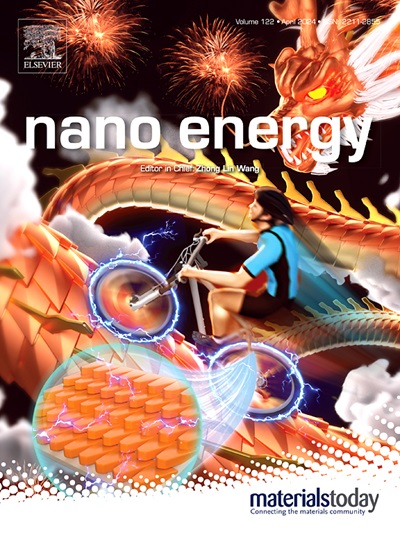Spatially controlled lithium utilization in anode-free all-solid-state batteries via diffusive interface
IF 16.8
1区 材料科学
Q1 CHEMISTRY, PHYSICAL
引用次数: 0
Abstract
The anode-free solid-state battery represents the perfect balance of safety, cost-effectiveness, and high energy density for future batteries. However, it encounters significant challenges that result in rapid capacity fade in performance. An in situ-formed Li-rich interlayer can establish a diffusive Li-ion dynamic interface where spatially distributed Li+ enclosing reduces the rate of void accumulation. Moreover, the uneven Li+ flux at the electrolyte interface can be uniform through the Li-rich diffusive interface, leading to uniform deposition of Li0 on the current collector. The garnet solid-electrolyte LLZO-Ta (Li6.75La3Zr1.75Ta0.25O12) has been explored in an all-solid anode-free battery fabrication with a focus on uniform lithium deposition governed by operating conditions through a 500 nm Indium interlayer for enhancing anode-free battery performance. The evolved internal pressure due to the Li–In intermetallic crystal phase change preserves the dimensional stability of the interlayer during Li+ diffusion. More Li utilization is achieved through Li–In interlayer without introducing an excess Li source or applying external stack pressure. A Li-rich interphase coupled with cycling protocols can provide more lithium accessibility during cycling in limited-capacity Li batteries.

基于扩散界面的无阳极全固态电池空间控制锂利用
无阳极固态电池代表了未来电池在安全性、成本效益和高能量密度之间的完美平衡。但是,它遇到了导致性能迅速下降的重大挑战。原位形成的富锂夹层可以建立一个扩散的锂离子动态界面,空间分布的锂离子封闭降低了空隙积聚的速度。此外,电解质界面上不均匀的Li+通量可以通过富Li扩散界面得到均匀,从而使Li0均匀沉积在集流器上。研究了石榴石固体电解质LLZO-Ta (Li6.75La3Zr1.75Ta0.25O12)在全固态无阳极电池制造中的应用,重点研究了在500 nm铟夹层中均匀沉积锂的方法,以提高无阳极电池的性能。在Li+扩散过程中,由于Li - in金属间晶体相变而产生的内压保持了中间层的尺寸稳定性。通过Li - in中间层实现了更多的Li利用率,而无需引入过量的Li源或施加外部堆叠压力。在有限容量锂电池循环过程中,富锂间相结合循环协议可以提供更多的锂可及性。
本文章由计算机程序翻译,如有差异,请以英文原文为准。
求助全文
约1分钟内获得全文
求助全文
来源期刊

Nano Energy
CHEMISTRY, PHYSICAL-NANOSCIENCE & NANOTECHNOLOGY
CiteScore
30.30
自引率
7.40%
发文量
1207
审稿时长
23 days
期刊介绍:
Nano Energy is a multidisciplinary, rapid-publication forum of original peer-reviewed contributions on the science and engineering of nanomaterials and nanodevices used in all forms of energy harvesting, conversion, storage, utilization and policy. Through its mixture of articles, reviews, communications, research news, and information on key developments, Nano Energy provides a comprehensive coverage of this exciting and dynamic field which joins nanoscience and nanotechnology with energy science. The journal is relevant to all those who are interested in nanomaterials solutions to the energy problem.
Nano Energy publishes original experimental and theoretical research on all aspects of energy-related research which utilizes nanomaterials and nanotechnology. Manuscripts of four types are considered: review articles which inform readers of the latest research and advances in energy science; rapid communications which feature exciting research breakthroughs in the field; full-length articles which report comprehensive research developments; and news and opinions which comment on topical issues or express views on the developments in related fields.
 求助内容:
求助内容: 应助结果提醒方式:
应助结果提醒方式:


